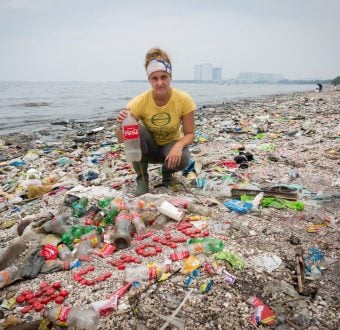Childrens garments made in Chinas biggest kids wear manufacturing towns contain hormone disruptors and chemicals that are toxic to the reproductive system, says a Greenpeace East Asia report released today.
Products from the two Chinese towns, Zhili Town of Zhejiang Province and Shishi City of Fujian Province,are being sold to the domestic and international market, including countries in the Middle East, Southeast Asia, Africa, Europe and North America. The environmental advocacy group called upon the Chinese government to ban the use of these chemicals in kids wear and to begin eliminating their use.
Childrens clothing made in the two towns we investigated is sold to 98 percent of Chinese cities and many other countries, through traditional and the increasingly popular E-commerce platforms. Our investigation is sending a serious signal of caution to the parents of more than two hundred million Chinese children and their foreign counterparts, said Lee Chih An, Toxics Campaigner, Greenpeace East Asia.
Greenpeace staff bought 85 childrens garments between June and October of this year, all made in either Zhili Town or Shishi City. Tests conducted by independent third-party laboratories revealed that more than half of the tested samples detected NPE, a hormone disrupter, while nine in ten items made of polyester tested positive for antimony. Phthalates, which are known for their toxicity to the reproductive system, were also found in high concentrations on two samples.
The children’s clothing industry is a one trillion Yuan (about 165 billion US dollars) business with a projected 30 percent annual growth, making it one of the fastest growing economic sectors in China. Together the two kid’s wear manufacturing towns investigated by Greenpeace East Asia produce about 40 percent of all the children’s clothing items made in China. Their products are also exported to countries in Asia, Africa, Europe and the Americas.
The leaps and bounds made in terms of growth by the kid’s wear industry has by far outrun the development of China’s chemicals regulation system. Take, for example, the three toxic chemicals found on the samples. There is no comprehensive regulation to control their usage in kids wear, added Lee.
A national safety standard for hazardous chemicals on kids wear has sat in policy makers drawers for six years now, and we still have no idea when it will be promulgated, Lee continued.
China has already grown to become the world’s biggest manufacturer of textiles and chemicals, while regulation hazardous chemicals have, in comparison, only just begun.
With a new baby born in China every other second, the country cannot afford to take any chances on the crucial issue of children’s health, said Lee. Only by establishing a comprehensive and rigorous chemical management policy can China really safeguard its children.



